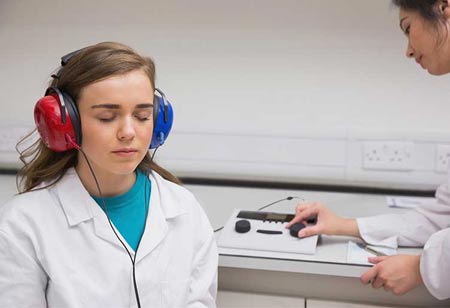Why Audiometry Testing Matters for Hearing Health

More in News
Thank you for Subscribing to Medical Care Review Weekly Brief

By
Medical Care Review | Wednesday, March 12, 2025
Stay on top of your health and well-being with exclusive feature stories on the top medical clinics and treatment centers, expert insights and the latest news delivered straight to your inbox. Subscribe today.
Fremont, CA: Hearing loss may occur as people age, but anyone can be affected. Audiometry is one method used to test for hearing loss. An audiometry test evaluates your hearing. It assesses balance problems, sound intensity and tone, and other inner ear-related problems. The test is conducted by an audiologist, a medical professional specializing in identifying and treating hearing loss.
Sound intensity is measured in decibels (dB). Quiet sounds, like whispers, can be heard by a healthy human ear. They are roughly 20 dB. A loud sound, like a jet engine, is between 140 and 180 dB. A sound's tone is expressed in cycles per second. Hertz (Hz) is the unit of measurement for tone. About 50 Hz is the frequency of low bass tones. Tone levels between 20 and 20,000 Hz are audible to humans. The typical frequency range for human speaking is 500–3,000 Hz.
The field of audiometry involves several examinations. You can measure the quietest sound at various pitches with a pure tone test. An audiometer, a device that plays sounds through headphones, is used in this process.
A range of sounds, including speech and tones, will be played into one ear at a time by an audiologist or an assistant at various intervals to assess your hearing range. For every sound, you will receive instructions from the audiologist. Usually, when a sound is heard, they will ask you to raise your hand.
Your audiologist will administer an additional hearing test to evaluate your ability to discriminate between background noise and speech. After hearing a sound sample, you will be asked to repeat the phrases you hear. Diagnosing hearing loss may be aided by word recognition.
You can use a tuning fork to test your ear's ability to detect vibrations. To find out how well vibrations travel through the bone to your inner ear, your audiologist will place this metal instrument on the mastoid, the bone behind your ear, or use a bone oscillator. A mechanical instrument called a bone oscillator transmits vibrations in a manner akin to that of a tuning fork.
More in News
